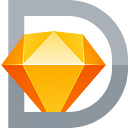How to Build Prototypes Using InVision
In the last weeks, I’ve been working on a Skillshare class about how to build interactive prototypes using Sketch & inVision.
The class is free and available on Skillshare
What is the class about?
In How to Build Prototypes Using InVision you will learn how to use inVision platform to create prototypes, for both, mobile and web. You’ll be able to:
- Create a prototype
- Add your design screens or sync your Sketch file
- Create hotspots
- Add transitions between screens
- Create more complex interactions such as go to a new screen after 10s or go to an external link when clicking a button
- How to share the prototype to get some feedback from your team
- How to update your design screens directly from Sketch by making use of the Craft plugin.
Note: Prior experience is not required to join the class, although some previous experience with a digital design tool is more than welcome.
Why should you learn about prototypes?
My favourite thing about prototypes is that it helps you to make your static designs come alive.
I think is important that everybody working on a digital environment get a sense of how to show the interaction and navigation between screens in a digital product or service. It’s a strong method to communicate designs to stakeholders, the product and development team.
What is the format of the class?
The approach of this course is more practical than theoretical, just to give you a sense of the actual job. The idea is to learn by doing and failing, so be ready to switch between Sketch and inVision to make things work right.
Why do you have to take this course?
This course will give you the chance to get some hands-on experience of the job. You don’t need any previous experience to take the class, even if you don’t know how to use Sketch or Photoshop you can take the class. You will see all ready-made designs screens to download and just get into inVision.
Class project
So, the project in this class is to build a prototype. We will cover everything you need, you will have to pick some user scenarios, create your users flows, and then you will have to change some elements of the interface. After that, you will build the prototype and share it with the rest of the class to get feedback.
What will you achieve?
By the end of this class you should have a really great grasp of the process, tools, what you can do and how you can really quickly build prototypes.
Hope to see you in the class!
Thanks for reading (and watching) 😄

